Do you know how much money you’re earning on your rental property in Santa Rosa?
Cash flow is a term that you probably hear a lot as an investor. It’s essentially the money you earn in the short term, typically from the rents you collect. Cash flow is an important metric because it determines the viability of your investment property and hints at your overall profit over both the short and the long term.
Each investor has a different way of establishing what they’re earning in cash flow. For some, it’s as simple as looking at what they have left over from a rental payment once all of the expenses are covered. Others take a more in-depth look at what they’re earning and spending.
As Santa Rosa property managers, we believe our owners and investors need to understand exactly where they stand when it comes to establishing earnings and understanding what their cash flow actually is. We want to guide you through the process of calculating rental property cash flow so that you can make informed decisions and ensure the financial success of your investment.
Understand Your Gross Rental Income
At its most basic, the cash flow equation is this:
Cash flow = Total income – Total expenses
So, the logical first step in calculating rental property cash flow is determining your gross rental income. This is the money you receive from your tenants each month. To calculate this income, multiply the monthly rent by the number of units in your property. For instance, if your monthly rent is $3,000, and you have four units, your gross rental income would be $12,000.
That’s your gross rental income.
To really drill down into your potential cash flow, you’ll need to project the effective gross rental income of your rental property. Maybe you collect pet rent or pet fees. Your tenants could pay a valet trash fee every month.
Calculating future rents will help you understand the potential cash flow of your property and the projected gross income, especially if you’re not collecting rent yet but deciding what you could earn on a specific property. To do this, you’ll need a rental property analysis.
How does vacancy affect your gross rental income?
It would be tremendous if you could rent out a property without having to think about those vacant weeks or months. Turning over from one tenant to another in 24 hours is probably not feasible, however. So, when you’re thinking about gross rental income, how do you factor for those vacancy losses?
You’ll need to apply a vacancy factor that’s based on the market in general and your property in particular. Get to know the average vacancy days so you can calculate your vacancy risk into your gross rental income. Usually, your rate will fall between 2 and 8 percent. If it’s a hot market, like it is now, a 2 or 3 percent vacancy consideration is not unlikely.
Understand your Gross Expenses
Expenses will always vary from one property to the next, and many of them are recurring and therefore predictable. That’s good news when you’re trying to determine your cash flow because the only thing more important than knowing what you’re earning is knowing what you’re spending.
Start with your operating expenses. These will include:
- Insurance covering your property and your liability
- Property taxes
- Repairs and preventative maintenance
- Utility costs
- HOA fees
- Services such as landscaping, pest control, and property management
What about variable expenses? These can be more difficult to budget for, but you never know when you’ll need to replace a water heater or a roof or an HVAC system. You don’t necessarily have to plan for every potential catastrophe, but as you’re determining what your expenses are, make sure you’re leaving some room for those variable and surprising expenses that you don’t expect.
Capital expenses are costs that occur less frequently. You won’t have a new roof to replace every month. However, you still want to account for them. Save for these big-ticket items. If you have a reserve fund to pay for these issues as they arise, you won’t have to worry about risking all of your cash flow just because you need a new appliance.
It’s unpredictable, the act and the art of owning rental property. When you have that reserve in place, there’s less drama and stress about those unexpected costs. Your budget and your reserve should depend on the condition and age of the property.
Add up all of these costs and subtract them from your gross rental income to calculate your net operating income (NOI).
Net Operating Income and Cash Flow on Santa Rosa Rental Properties
The profitability of your rental property, or your cash flow, can be determined once you have effectively calculated your income and expenses.
Deduct the expenses from the income. That’s your NOI. Are you on the positive side of things or the negative side?
Negative cash flow means that your rental property is not currently making you money. You’re putting resources into an investment that is yet to turn a profit. That’s not necessarily unexpected, especially in a market like Santa Rosa, and especially when you’ve first begun renting it out.
You’re not earning positive cash flow, but you’re still earning money on your investment.
Understanding Cash Flow After Debt
If you have a mortgage on your rental property, you’ll need to consider its debt service. This is the amount of interest and principal you pay each month. To calculate this, you’ll need to know your mortgage payment, interest rate, and the loan term.
Once you have established that, subtract your annual debt from your NOI. This will tell you what your cash flow is outside of the money you owe on your mortgage. This is an important step that can help you before you invest. It allows you to determine how much money you should put down on an investment property in order to earn the cash flow you’re hoping for.
What Do All These Calculations Mean for Your Cash Flow?
 Now that you have established your NOI and decided how much of an impact your debt has on your cash flow, you can analyze the property for its profitability. Here’s the typical calculation:
Now that you have established your NOI and decided how much of an impact your debt has on your cash flow, you can analyze the property for its profitability. Here’s the typical calculation:
Cash Flow = NOI – Debt Service – Capital Expenditures
By following these steps, you can determine the cash flow potential of your rental property and make informed decisions about how to manage your investment.
Here are some of the most important indicators that tell you whether or not your investment property is producing the returns that you’re hoping it does:
- Is the cash flow positive? Earning a profit even after expenses is a sure sign that you’re working with a profitable rental home.
- How does your cash-on-cash return look on paper? This calculation allows you to look at the cash income that you earn over the cash that you invested in your rental property. When you have a higher cash-on-cash return, you know that the property will likely pay for itself over the long-term, leaving you with more impressive earnings. You can calculate cash-on-cash by dividing your annual cash flow by the total cash invested and then multiplying the result by 100. This will give you the cash-on-cash percentage.
- What is your Cap Rate on the purchase price? Cap rate allows you to consider your NOI relative to the price you paid for the property. Divide your NOI by the purchase price and multiply by 100. This provides you with your Cap Rate percentage.
Every investor has a different set of metrics and indicators that they’re most comfortable using when they calculate income, profitability, and ROI. Your definition of success is likely to be different from any other investor’s definition of success. Lean into that and establish calculations and analytics that show you what you need to know. Set a threshold for each indicator. If you analyze a deal or an existing property and you find that all of your investment goals are being met, you’re on the right path.
These are things that you have to understand, whether you’re investing in a single property or growing an entire portfolio. Knowing where you are and where you want to go will help you be a more profitable investor. This information will also help you leverage the property and the assets you currently own. You’ll make better decisions about the opportunities that are available.
By knowing your cash flow, you’ll be able to make informed decisions about your investment, including identifying opportunities to improve profitability. By considering all of the factors discussed here, you can determine the profitability of your rental property and set yourself up for long-term success.
We know that all of this can seem overwhelming, and that’s why we believe professional Santa Rosa property managers can be invaluable in helping you understand profit and property. We’re here to help. Please contact us at Prestige Real Estate & Property Management. We manage homes in Sonoma County, including Santa Rosa, Windsor, Sebastopol, Petaluma, and Rohnert Park.
